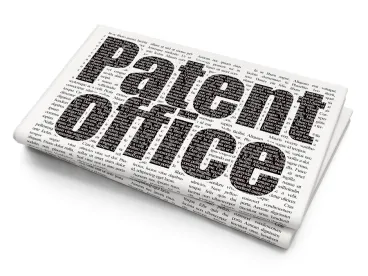The United States Patent and Trademark Office (“USPTO”) recently released a Report summarizing the comments received during two roundtable discussions that the USPTO hosted in 2016 on patent subject matter eligibility. Since 2010, the U.S. Supreme Court has issued four major decisions that have transformed subject matter eligibility law, and the USPTO has responded with a variety of measures that attempt to ensure that 35 U.S.C. § 101 is implemented in a way that is fair to all stakeholders while remaining consistent with the decisions of the judiciary. The Report provides an extensive discussion on the origin and development of patent eligibility through 2010, summarizes how patent eligibility is approached internationally, and then recaps the remarks received during the roundtable discussions.
 The Report provides a breakdown of viewpoints in support of the decisions issued by the U.S. Supreme Court, as well as those that are opposed. The Report notes that one of the most popular benefits mentioned was the ability for defendants in litigation to use the new patent eligibility framework as a tool for invalidating claims asserted by a patent assertion entity (PAE). For example, defendants now have a greater chance of having an infringement lawsuit dismissed during the pleading stage by demonstrating that the asserted patent recites a judicial exception without additional elements that are sufficient to amount to significantly more than the judicial exception. According to some commentators, this results in defendants avoiding the need to spend thousands of dollars to litigate the dispute through trial, especially for small- and mid-sized businesses that could otherwise be pressured into settling the lawsuit with the PAE.
The Report provides a breakdown of viewpoints in support of the decisions issued by the U.S. Supreme Court, as well as those that are opposed. The Report notes that one of the most popular benefits mentioned was the ability for defendants in litigation to use the new patent eligibility framework as a tool for invalidating claims asserted by a patent assertion entity (PAE). For example, defendants now have a greater chance of having an infringement lawsuit dismissed during the pleading stage by demonstrating that the asserted patent recites a judicial exception without additional elements that are sufficient to amount to significantly more than the judicial exception. According to some commentators, this results in defendants avoiding the need to spend thousands of dollars to litigate the dispute through trial, especially for small- and mid-sized businesses that could otherwise be pressured into settling the lawsuit with the PAE.
The Report also includes comments that pointed to the recent court decisions as a natural, intended function of the judiciary, and called for the courts, particularly the Federal Circuit, to continue focusing on determining whether a technological improvement or solution exists in the patent eligibility analysis. Others praised the decisions as serving to invalidate overly broad patents that should never have been issued under other statutory requirements, such as anticipation or definiteness. Although not its intended purpose, 35 U.S.C. § 101 is viewed by some as a test of last resort, and an effective tool for the courts and defendants to fight back against overly broad patents. The Report also notes that a group of stakeholders praised the courts for considering whether claims are directed to a specific way of achieving a result, rather than merely claiming the result itself.
The Report also summarizes those viewpoints that took exception with the recent court decisions. Specifically, commentators opined that the Supreme Court’s decisions are either wholly unsupported by the Constitution, or conflict with Congress’s legislative authority to define the line between eligible and ineligible subject matter. Others commented that life sciences and computer-related technologies have been heavily affected by the recent court decisions surrounding subject matter eligibility because many of the innovations in these areas are closely linked to judicial exceptions. The Report also notes that several commentators felt that the judicial exceptions – abstract idea, law of nature, and natural phenomenon – have expanded to the point of swallowing the eligibility rule. Finally, some stakeholders felt that the two-step eligibility analysis established in the Supreme Court’s decisions in Mayo Collaborative Servs. v. Prometheus Labs., Inc., 132 S. Ct. 1289 (2012) and Alice Corp. v. CLS Bank Int’l, 134 S. Ct. 2347 (2014) is inconsistent and confusing, and creates an unpredictable environment during both prosecution and litigation.
The USPTO also considered several recommendations on how to move forward in addressing the changes to subject matter eligibility. Most simply, some commented that the judiciary should continue to develop the case law unimpeded, and that similar developments, such as obviousness under KSR Int’l Co. v. Teleflex Inc., 550 U.S. 398 (2007), took years to resolve, albeit successfully. The Report also notes some requests for a more consistent application of the Mayo/Alice decisions by USPTO examiners, and for the USPTO to release additional guidance and examples in the life sciences.
Finally, the Report mentions requests for Congress to pass legislation to amend 35 U.S.C. § 101 of the Patent Act to define the boundaries of subject matter eligibility, as well as to define terms such as “abstract idea” and “law of nature.” One suggestion was for Congress to require a “technological or useful arts test” instead of the two-part Mayo/Alice test. Other suggestions were for Congress to explicitly enumerate all exceptions to patent eligibility, or even eliminate eligibility as a statutory condition for patentability altogether.
As more decisions are handed down from the courts that refine the boundaries of subject matter eligibility, the proactive approach taken by the USPTO—exemplified by its 2016 roundtables—should continue to guide stakeholders through the changing area of subject matter eligibility. (For more information on the roundtables, please see our November and December 2016 blogs).




 />i
/>i
